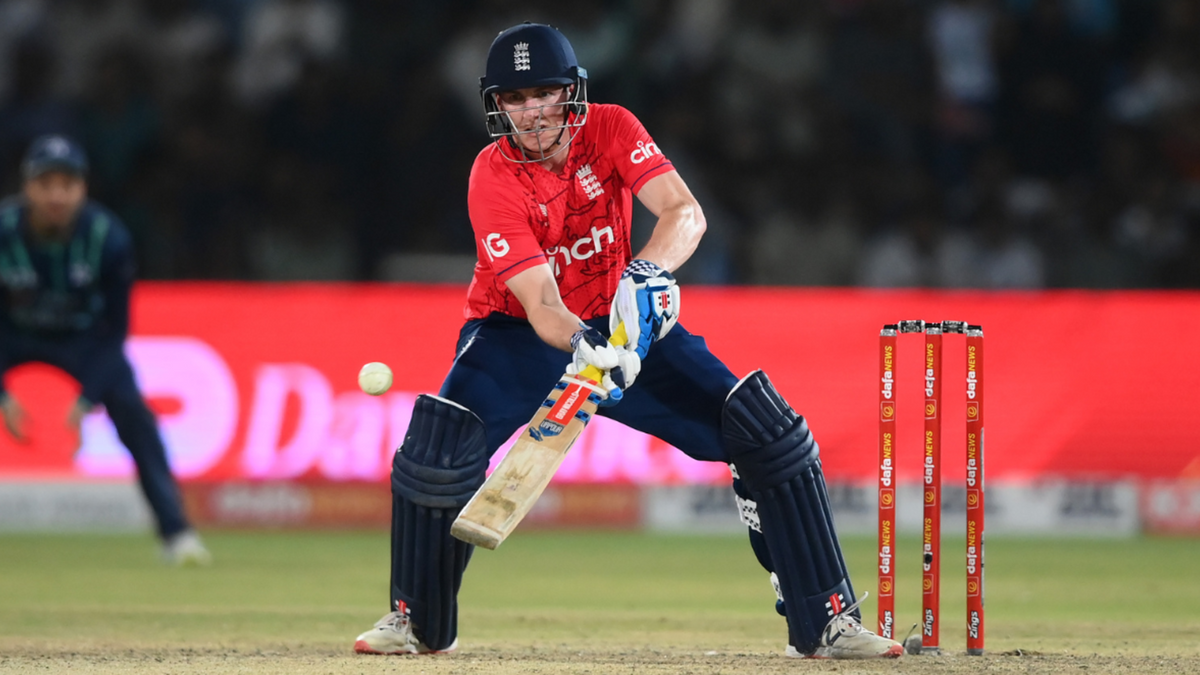
Harry Brook has been left out of England’s 2023 World Cup squad, having only played three ODIs since his international debut in 2021: a mess of scheduling and priorities has deprived England of Brook’s services for their title defence.
Subscribe to the Wisden Cricket YouTube channel for post-match analysis, player interviews, and much more.
After a dream start to his international career, Brook has hit his first stumbling block. Essential to England’s Ashes resurgence after his winter of Test glory, with a T20 World Cup winner’s medal around his neck aged 23, he finds himself on the outside for the first time in almost a year.
It’s a mark of Brook’s talent that, despite having played only three ODIs, many met the news he would not be in England’s preliminary 15-man squad with open-mouthed disbelief. Even more so considering two out of those three ODI innings amounted to 0 and 6.
As always, he passes the eye test. The swagger when he walks to the crease and the audacity with which he plays negate any caveats of previous experience.
But experience is what England have clung to, for the most part, in their World Cup selections – particularly in their batting order. All of the expected top five were part of the 2019 cohort. Of the batters expected to bat higher than six, Dawid Malan is the only one who wasn’t part of the team four years ago.
[breakout id=”1″][/breakout]
It didn’t have to be a straight shootout between Malan and Brook for a place in the squad. There’s a scenario in which Liam Livingstone, or even Jason Roy on recent form, didn’t make the grade, leaving room for both Brook and Malan.
But when it did come down to that choice, Malan’s ODI numbers – an average of 66.1 since the beginning of 2022 – and ability to bat higher up the order have held out. Part of that revolves around Malan being afforded the opportunity in ODI cricket over the past two years, while Brook has not.
Brook’s international debut came in January 2022, in a T20I in the West Indies. Having been in England’s plans for a couple of years, he was picked when his form was at a low point. He came into that series off the back of a BBL campaign where he averaged 6.28 from seven innings. His England debut yielded 10 runs from 13 balls, and he didn’t feature in the remaining two matches in the series. There were no ODIs to accompany the T20Is in the West Indies. It was full steam ahead for the T20I World Cup at the end of the year.
But over the rest of his winter, Brook’s transformation was profound. He went from the Caribbean to the PSL. Playing on batter-friendly surfaces punctuated by some of the best bowlers in the world, he made a breakthrough. He scored 264 runs in the tournament and averaged 55.80. Most importantly, he made a 48-ball hundred – at the time the second-fastest in PSL history.
[breakout id=”0″][/breakout]
Coming back to the English season, Brook was dominant in the County Championship. By June, he was the leading run-scorer in Division One, with three centuries and an average of over 100. Unsurprisingly, England came calling again, this time for the longest format.
Picked in the squad for the New Zealand Test series, he didn’t play a game. It’s a symptom of England’s format re-prioritisation that while a half-first-choice fifty-over side were living it up in the Netherlands, Brook was tied to the Test side.
Had England regarded Brook as a realistic possibility in their 2023 World Cup squad by last summer, the obvious thing to do would have been to play him in the series against India and South Africa. However, Eoin Morgan’s retirement firmly cemented Jos Buttler at No.5, with Livingstone brought in as the lower-order hitter. Brook wasn’t what they were looking for at the time, pre-Stokes’ retirement.
But with the focus still on the T20 side in the build-up to the World Cup, Brook was given his shot at a place in Australia on England’s seven-match accelerated selection series in Pakistan. That he grabbed that opportunity with both hands and forced his way into the T20I side is also a factor in his ODI fortunes.
[breakout id=”2″][/breakout]
Having played in the T20 World Cup and been picked for the Test matches in Pakistan, he didn’t feature in the ODI series in Australia in the middle. Malan made a poignant hundred in the first game.
Branded rightfully as an all-format player, despite having only played two out of the three internationally by this January, Brook finally made his ODI debut in South Africa, in a series shoved into the schedule before the Tests in New Zealand. Forget the two single-digit scores, the 80 in his second innings was of as higher calibre as Brook had already produced in T20s and Tests. All-format player confirmed.
But his centrality to the Test side meant he then didn’t play the next round of ODIs in Bangladesh – in which Malan made another century – and his omission from England’s World Cup squad means he won’t be given the opportunity to reaffirm his credentials against New Zealand before the competition.
Looking back, his absence from the home India and South Africa series last summer was crucial, as was Malan taking his chances to make as strong a case for World Cup selection as he could. Brook has the star power, but Malan has the stats. And Stokes’ unretirement was the nail in the coffin.
England have selected on the basis of what their World Cup players have done, rather than what Brook is capable of.








